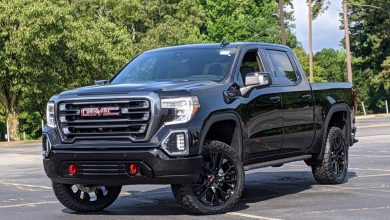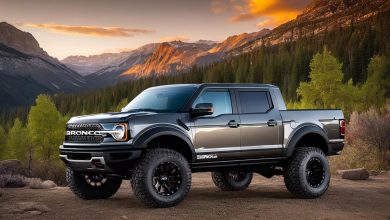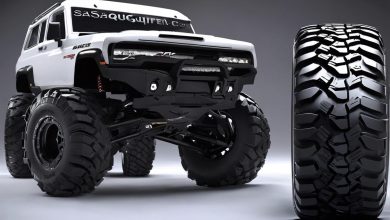How Much Does Ford F650 Weight

There are different models of Ford F650 having different weights according to their specifications. We have compiled a list of different Ford F650 models and mentioned their weights. Here you can know the Ford F650 weight for each model with their features.
How much does a Ford F650 weigh? The Ford F650 weight is 3.5 to 7.5 tons depending upon their models. Within the normal setup of equipment, the average weight of Ford F650 is 8500 pounds. The F650 weight has variant ranges depending upon stipulations and representations.

The weight of this model goes on increasing gradually from its start. Only weight can’t define any criteria of efficiency unless we involve power ratio with it. Length of bed and cab along with wheel model also defines the standard of weight. Trimness is the factor through which we can improve weight according to conditions.
How Much Does Ford F650 Weight?
By knowing the actual specs especially weight, you can access yourself to the GVWR rating to understand loading balance. Below here we have explained several features defining the measures of weight. When we talk about the weight that means we are talking about its curb weight.
Evaluation of Ford F650 Within the Weight
For positive evaluation, the one thing every company does is to enhance the features according to the requirement. The same thing goes with the Ford F650. From the start of this at 1967 to the latest model, a lot of changes have been made.
All these changes have been made after a lot of experiments and clarifications to improve customer reliability. Here we have gathered some of the information related to the Ford F650 weight along with model names.
These evaluations lead Ford’s company towards popularity at the start of 2002. Let’s check these model improvements given with a decade difference involving only curb weights.
| 1970 | Super Cab Ford F650 | 7000 lbs |
| 1971 | 6L V-10 Crew Cab Gas Engine | 7100 lbs |
| 1972 | 6.5L Super Duty Ford F650 | 7120 lbs |
| 1973 | 3L F650 Extended Cab | 7135 lbs |
| 1974 | Pro Loader Ford F650 | 7155 lbs |
| 1975 | Ford F-650 | 7170 lbs |
| 1976 | Ford F650 | 7190 lbs |
| 1977 | Diesel Engine F650 | 7220 lbs |
| 1978 | F-650 | 7250 lbs |
| 1979 | SD Diesel F650 | 7275 lbs |
| 1980 |
Straight Frame Ford F650 |
7300 lbs |
| 1981 |
Model F650 |
7320 lbs |
| 1982 |
Ford F650 |
7330 lbs |
| 1983 |
Model F-650 |
7340 lbs |
| 1984 |
Ford F650 |
7360 lbs |
| 1985 |
F-650 |
7380 lbs |
| 1986 |
F-650 |
7395 lbs |
| 1987 |
F-650 |
7400 lbs |
| 1988 |
F-650 |
7415 lbs |
| 1989 |
F-650 |
7440 lbs |
| 1990 |
F-650 |
7470 lbs |
| 1991 |
F-650 |
7495 lbs |
| 1992 |
F-650 |
7500 lbs |
| 1993 |
F650 |
7525 lbs |
| 1994 |
F650 |
7555 lbs |
| 1995 |
F650 |
7565 lbs |
| 1996 |
F-650 |
7700 lbs |
| 1997 |
F650 |
7720 lbs |
| 1998 |
F-650 |
7745 lbs |
| 1999 |
Extended F-650 Crew Cab |
7775 lbs |
| 2000 |
F-650 |
7795 lbs |
| 2001 |
F-650 |
8710 lbs |
| 2002 |
F-650 |
8730 lbs |
| 2003 |
F-650 |
8750 lbs |
| 2004 |
F-650 |
9085 lbs |
| 2005 |
F-650 |
9100 lbs |
| 2006 |
F-650 |
9150 lbs |
| 2007 |
F650 |
9280 lbs |
| 2008 |
F-650 |
9345 lbs |
| 2009 |
F-650 |
9400 lbs |
| 2010 |
Ford Tractor F-650 |
9545 lbs |
| 2011 |
F-650 |
9600 lbs |
| 2012 |
F650 |
9660 lbs |
| 2013 |
F-650 |
9770 lbs |
| 2014 |
F650 |
9870 lbs |
| 2015 |
F-650 |
9880 lbs |
| 2016 |
Regular Cab Ford F650 |
9895 lbs |
| 2017 |
SD Diesel F650 Tractor |
11600 lbs |
| 2018 |
Crew Cab F650 |
12500 lbs |
| 2019 |
Diesel F650 Pro Loader |
13200 lbs |
| 2020 |
Ford Gas-Pro Loader F650 |
13450 lbs |
| 2021 |
F-650 |
15000 lbs |
Importance of Ford F650 Curb Weight
The thing that helps most for judging gross rate vehicle weight (GRVW) rating is the curb weight. Curb weight means the actual weight of the truck right after manufacturing.
In simple words, without any modifications and foreign involvement (passenger, luggage, or driver’s weight), the weight of the truck is known as curb weight.
Keep in mind, the things that must include in the curb weight involve all the needed apparatus oils and the fuel in the tank. Before buying trucks people used to determine their curb weights to be familiar with the vehicle.
Curb weight determines the requirement that how much you can load as payload and the limit of towing factor. Generally, it is used in the term to finalize what things you can carry on with yourself within the given requirements.
Payload is the capacity of the truck representing the difference between the curb weight and GRVW.
The Towing Capacity of Ford F650
The towing capacity of the truck refers to the maximum weight of the luggage that a truck can pull. This factor has significance as it determines the efficiency of the truck.
It is equal to the equation; TC = GCVW-Curb weight
The maximum capacity for Ford F650 credit goes to the straight model as it has the ability because of its smooth shape. The average towing capacity among its different varying models is between 23,000 to 24,000 pounds.
As in the above section, we have talked about the different curb weights of different models so TC also varies to the same extent. It is always more than the payload.
Power to Weight Ratio
The amount of power conquered by the truck relative to its weight is known as the power to weight ratio. This term is used to describe the performance of the vehicle. There is a wrong idea stuck within peoples’ minds that the more the weight will be more will be the ratio of performance. But that’s wrong.
As we know the weight is been going to increase with every improvement in the latest model of Ford F650. The thing behind this is when you are improving the vehicle’s power you need to add some weight in the form of heavy engines.
Heavy engine means heavy machinery and heavy machinery needs more oil and related operating system. So that something over which we have to be careful while considering weight in the search of vehicles.
Different Factors Affecting on Ford F650 Weight
There are different factors that involve in the Ford F650 weight. Some important factors which define weight parameters are given below:
F650 Bed Size
It is simple as long the bed will be more will be the weight of it. Bed size depends upon you that how much you choose according to your requirements.
Sometimes for family purposes, people go with the larger one as additional seating and luggage space are needed. Every inch of extra space adds some extra pounds so be cautious while choosing the size of the bed.
Ford F650 Cab Size
Cab size is a key factor as we have to set this in proportion to the bed length. The most famous cabs are of four doors style and obviously, they add more than the regular crew cab. The length of bed size depends on the cab, as larger the cab will be, the more we have to set the space for a bed and that means more weight we have to carry.
F650 Engine Set Up
Engines are also of different sizes depending upon their capacity. As stated above, this is one of the main reasons why the weight of F650 increasing with every coming model.
Engine setup done on two bases. First is the weather we have to set 4,6 or 8-cylinder engines (capacity wise) and the other is diesel engines or gas engines (performance base).
4,6-cylinder and gas engine is used for lightweight competition purposes. While diesel engines and 8-cylinder are used to withstand difficult conditions for higher torque and stability.
2WD and 4WD
These are known to be the drivetrain or simply powerhouse of the truck. If you are carrying more weight then it is obvious that you need to use the 4WD. For 4WD there would be some additional aids we have to add. And that’s going to enhance the overall weight of the truck.
In the same way, as heavy engines used for heavy purposes, 4WD is also been used. It’s all about your working conditions and the demand for your transportation.
During normal situations, 2WD is used and they have more haul and tow than the 4WD with the extra benefit of being lighter ones in weight. Read more about the conversion of Ford 2WD to 4WD in this article.
Trim Variety
This means how much you add in terms of extras to your truck may be for decoration or any other purposes. These can also be the supportive or fancy features that come up with the model for relaxation. And it doesn’t have too much effect as the other factors listed above but you can’t ignore this one.
Read also;




